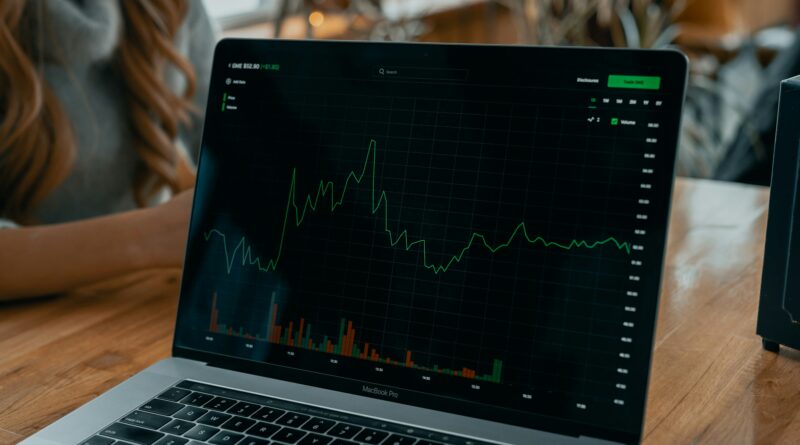The Reinvention of Risk: Real-Time, Forward-Looking Risk Models
Meta: How forward-looking risk models use continuous signals, on-chain data, and automated scenarios to outperform traditional volatility metrics.
The Reinvention of Risk: Real-Time, Forward-Looking Risk Models
Most risk models in finance still rely on historical data. They use past volatility, past correlations, past returns – as if the next 12 months will behave like the last 12. This approach collapses in modern markets, especially when portfolios include alternative assets, digital assets, private credit, or anything with irregular pricing.
In my internal discussions – including a valuable perspective from Igor Izraylevych, CEO & Founder of S-PRO AG – one idea stood out: risk cannot remain backward-looking. The next generation of investment platforms will use real-time, forward-looking risk engines built around live data, continuous signals, and dynamic scenario logic.
Below is what is fundamentally changing.
1. Historical risk models break in fragmented, fast-moving markets
Traditional risk tools assume:
- stable correlations
- liquid markets
- predictable pricing
- daily valuation cycles
- symmetric distributions
- negligible structural breaks
None of that holds anymore.
Today portfolios include:
- tokenized assets
- blockchain-native instruments
- private market exposures
- illiquid real estate
- assets priced monthly or quarterly
- highly reactive digital markets
A risk engine built only on past price movement cannot capture the true state of these assets.
This is why forward-looking models require:
- event-driven inputs
- real-time feeds
- cross-asset derivatives data
- blockchain transaction signals
- alternative datasets
- liquidity indicators
- internal workflow triggers
Markets move too fast for historical-only logic to remain relevant.
2. Real-time risk means risk recalculates continuously
Traditional systems run risk once per day. Sometimes once per week. Sometimes once per quarter for illiquid assets. A forward-looking engine recalculates every time:
- new data arrives
- a valuation changes
- a transaction settles
- a price feed updates
- an on-chain event occurs
- a user makes an allocation change
This requires a streaming architecture, not a batch process.
It also requires a portfolio model that updates incrementally without full recomputation. The backend must be modular, fast, and event-driven – something many teams explore during product discovery phases when defining the next generation of risk tools.
3. Forward-looking models rely on predictive indicators, not historical volatility
Predictive risk models incorporate:
- implied volatility
- real-time liquidity depth
- flow-of-funds data
- network activity for digital assets
- correlation instability indicators
- stress probabilities
- initial signs of market dislocation
- structural regime shifts
Historical variance tells you what happened. Forward indicators tell you what is likely to happen next. This is especially important in digital markets, where signals like on-chain volume, wallet movement, and settlement congestion can reveal risk before price reacts.
Platforms working with blockchain assets – or integrating infrastructure from blockchain development companies – already use these signals for a more accurate picture.
4. Risk becomes scenario-driven, not benchmark-driven
Instead of computing risk relative to a benchmark index, modern engines simulate:
- liquidity shocks
- interest-rate jumps
- cross-venue outages
- collateral compression
- protocol failures (for digital assets)
- counterparty defaults
- regulatory surprises
- pricing discontinuities
Scenario-driven models can evaluate:
- how a portfolio behaves under stress
- what breaks first
- which assets amplify or absorb volatility
- when liquidity disappears
- how exposures interact in extreme events
Forward-looking risk is not a number – it is a map of possible futures.
5. Multi-asset risk must integrate on-chain and off-chain behaviors
Digital asset markets behave differently:
- 24/7 trading
- no central authority
- automated liquidations
- smart-contract execution risk
- protocol governance impact
- cross-chain dependencies
A risk model that ignores these factors is incomplete.
Forward-looking engines require:
- on-chain metrics
- validator activity
- bridge and settlement risk
- slippage indicators
- gas fee volatility
- smart-contract event logs
- custody and wallet security signals
Risk is no longer just about price. It’s about infrastructure, protocol health, and technical stability.
6. Risk must be explainable in real time
If risk changes every second, the platform must explain:
- why the number changed
- which signal triggered the change
- which asset contributed most
- what the user should pay attention to
This requires transparency:
- logs for every risk update
- derivation paths
- clear metrics
- contextual explanations
- versioned calculation logic
A risk model without explainability cannot pass compliance or internal review.
7. The future of risk is continuous, predictive, and automated
Forward-looking risk allows:
- real-time rebalancing
- automated hedging
- dynamic exposure adjustments
- continuous liquidity protection
- proactive margin alerts
- automated cash-flow allocation
- anomaly detection across asset classes
Risk becomes an engine, not a report. It powers the entire investment workflow, not just the end-of-day summary. Platforms with this capability will become the standard for multi-asset management – because backward-looking risk loses relevance as soon as market conditions shift.

